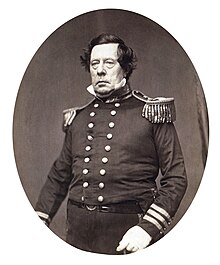
Oliver Hazard Perry was an American naval commander, born in South Kingstown, Rhode Island. The best-known and most prominent member of the Perry family naval dynasty, he was the son of Sarah Wallace Alexander and United States Navy Captain Christopher Raymond Perry, and older brother of Commodore Matthew C. Perry.

Matthew Calbraith Perry was a commodore of the United States Navy who commanded ships in several wars, including the War of 1812 and the Mexican–American War (1846–1848). He played a leading role in the opening of Japan to the West with the Convention of Kanagawa in 1854.
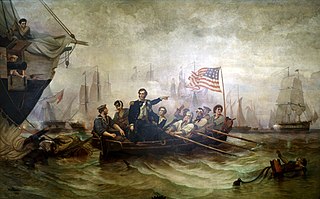
The Battle of Lake Erie, sometimes called the Battle of Put-in-Bay, was fought on 10 September 1813, on Lake Erie off the shore of Ohio during the War of 1812. Nine vessels of the United States Navy defeated and captured six vessels of the British Royal Navy. This ensured American control of the lake for the rest of the war, which in turn allowed the Americans to recover Detroit and win the Battle of the Thames to break the Indian confederation of Tecumseh. It was one of the biggest naval battles of the War of 1812.

John Rodgers was a senior naval officer in the United States Navy during its formative years in the 1790s through the late 1830s. He served under six presidents for nearly four decades. His service took him through many military operations in the Quasi-War with France, both Barbary Wars in North Africa, and the War of 1812 with Britain.

John Rodgers was an admiral in the United States Navy. He began his naval career as a commander in the American Civil War and during his Postbellum service became an admiral.

The Asiatic Squadron was a squadron of United States Navy warships stationed in East Asia during the latter half of the 19th century. It was created in 1868 when the East India Squadron was disbanded. Vessels of the squadron were primarily involved in matters relating to American commerce with China and Japan, though it participated in several conflicts over 34 years of service until becoming the Asiatic Fleet in 1902.
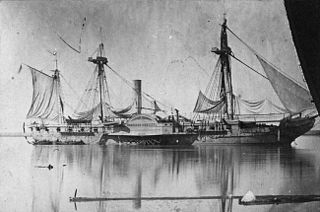
The Home Squadron was part of the United States Navy in the mid-19th century. Organized as early as 1838, ships were assigned to protect coastal commerce, aid ships in distress, suppress piracy and the Atlantic slave trade, make coastal surveys, and train ships to relieve others on distant stations. It was discontinued in 1861 after the outbreak of the American Civil War, when the Union blockade forced a reassignment of ships to close off Southern ports.
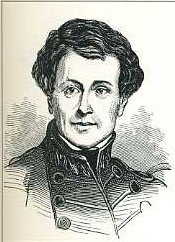
Alexander Slidell Mackenzie, born Alexander Slidell, was a United States Navy officer, famous for his 1842 decision to execute three suspected mutineers aboard a ship under his command USS Somers in the Somers Mutiny. Mackenzie was also an accomplished man of letters, producing several volumes of travel writing and biographies of early important US naval figures, some of whom he knew personally.

The Pacific Squadron was part of the United States Navy squadron stationed in the Pacific Ocean in the 19th and early 20th centuries. Initially with no United States ports in the Pacific, they operated out of storeships which provided naval supplies and purchased food and obtained water from local ports of call in the Hawaiian Islands and towns on the Pacific Coast. Throughout the history of the Pacific Squadron, American ships fought against several enemies. Over one-half of the United States Navy would be sent to join the Pacific Squadron during the Mexican–American War. During the American Civil War, the squadron was reduced in size when its vessels were reassigned to Atlantic duty. When the Civil War was over, the squadron was reinforced again until being disbanded just after the turn of the 20th century.
USS Germantown was a United States Navy sloop-of-war in commission for various periods between 1847 and 1860. She saw service in the Mexican–American War in 1847–1848 and during peacetime operated in the Caribbean, in the Atlantic Ocean off Africa and South America, and in East Asia. Scuttled at the outbreak of the American Civil War in 1861, she was captured and refloated by the Confederate States of America and placed in service with the Confederate States Navy as the floating battery CSS Germantown before again being scuttled in 1862.
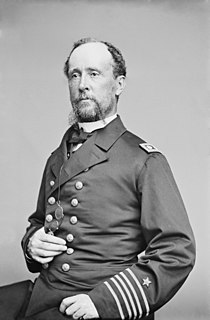
Rear Admiral Christopher Raymond Perry Rodgers was an officer in the United States Navy. He served in the Mexican–American War, the American Civil War, as superintendent of the Naval Academy, president of the United States Naval Institute, and commander-in-chief of the Pacific Squadron.

The Mediterranean Squadron, also known as the Mediterranean Station, was part of the United States Navy in the 19th century that operated in the Mediterranean Sea. It was formed in response to the First and Second Barbary Wars. Between 1801 and 1818, the squadron was composed of a series of rotating squadrons. Later, squadrons were sent in the 1820s to the 1860s to suppress piracy, primarily in Greece and to engage in gunboat diplomacy. In 1865 the force was renamed the European Squadron.

The East India Squadron, or East Indies Squadron, was a squadron of American ships which existed in the nineteenth century, it focused on protecting American interests in the Far East while the Pacific Squadron concentrated on the western coasts of the Americas and in the South Pacific Ocean. Part of the duties of this squadron was serving with the Yangtze River Patrol in China. The East India Squadron was established in 1835 and existed until it became part of the Asiatic Squadron in 1868.

Fort Foster is a Second Seminole War era fort in central Florida, located 9 miles (14 km) south of current-day Zephyrhills in Pasco County.

The Massachusetts Naval Militia, was a naval militia active during the American Revolutionary War. It was founded December 29, 1775, to defend the interests of Massachusetts during the war.
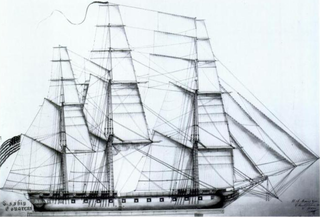
The West Indies Squadron, or the West Indies Station, was a United States Navy squadron that operated in the West Indies in the early nineteenth century. It was formed due to the need to suppress piracy in the Caribbean Sea, the Antilles and the Gulf of Mexico region of the Atlantic Ocean. This unit later engaged in the Second Seminole War until being combined with the Home Squadron in 1842. From 1822 to 1826 the squadron was based out of Saint Thomas Island until the Pensacola Naval Yard was constructed.
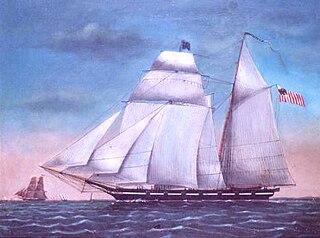
The United States Revenue Cutter Washington, named for Founding Father and the first U.S. president George Washington, was one of the 13 cutters of the Morris-Taney class. These cutters were the backbone of the United States Revenue Cutter Service for more than a decade. Samuel Humphreys designed these cutters for roles as diverse as fighting pirates, privateers, combating smugglers and operating with naval forces. He designed the vessels on a naval schooner concept. They had Baltimore Clipper lines. The vessels built by Webb and Allen, designed by Isaac Webb, resembled Humphreys' but had one less port.
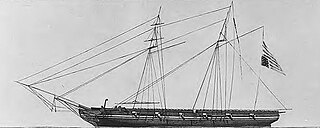
The West Indies Anti-Piracy Operations refer to the United States Navy presence in the Antilles, and surrounding waters, which fought against pirates. Between 1817 and 1825, the American West Indies Squadron constantly pursued pirates on sea and land, primarily around Cuba and Puerto Rico. After the capture of Roberto Cofresi in 1825, acts of piracy became rare, and the operation was considered a success, although limited occurrences went on until slightly after the start of the 20th century.

Rear Admiral George H. Cooper was an officer in the United States Navy. During his long naval career, he served on the African Slave Trade Patrol, and fought in the Second Seminole War, the Mexican War, the American Civil War, and the Korean Expedition, and rose to command of the North Atlantic Squadron.
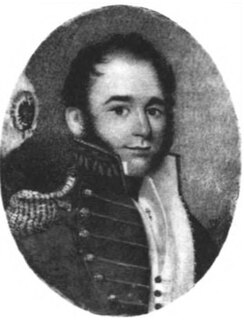
Thomas Jefferson Leib was an American naval officer of the early 19th-century sailing ship era, active in Florida's Second Seminole War as well as anti-piracy and smuggling suppression patrols throughout the Gulf of Mexico, Caribbean Sea, and West Indies.

